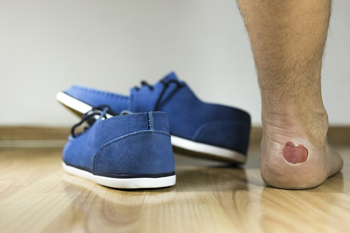How Runners Manage Blisters

Blisters on the feet are a common issue for runners, usually caused by friction and moisture. Friction arises from repeated rubbing between the skin and footwear, while moisture from sweat or wet conditions softens the skin, making it more prone to form a blister. Wearing Ill-fitting shoes and high-impact activities like running can worsen these problems, as do hot and humid weather, and foot conditions like bunions or hammertoes. Proper footwear selection is vital, opting for shoes that fit well and offer sufficient toe space. Wearing moisture-wicking socks and applying lubricants like petroleum jelly can help keep feet dry and reduce friction. Gradual conditioning of the feet by slowly increasing running distances and intensity also helps the skin adapt and become more resilient. Protective padding, such as moleskin, can be applied to vulnerable areas to reduce friction and pressure. Regular foot care, including trimming toenails, addressing calluses and moisturizing, contributes to overall foot health and reduces blister risk. For guidance with painful or infected blisters, it is suggested that you schedule an appointment with a chiropodist.
Blisters can usually be treated at home, however, if you have recurring blisters or experience significant discomfort or pain, please consult with one of the chiropodists from The Footcare Centre. Our chiropodists will assess your condition and provide you with quality foot and ankle treatment.
What Is a Blister?
A blister is a small pocket of fluid in the upper skin layers and is one of the body’s natural responses to injury or pressure. Blisters can also result from burns, fungal or viral skin infections, and the feet are particularly prone due to ill-fitting footwear and friction. Friction on the skin causes the upper layer of skin to separate from the lower layers. The space that this separation creates then becomes filled with a liquid called serum, which protects the lower layers of skin.
Treatment
If you notice a blister on your foot, you can cover it with a soft bandage or dressing to protect it. Popping the blister is discouraged. Doing so exposes the raw skin underneath it to bacteria and also raises the risk of infection. If a blister pops naturally, let it drain before covering it with a bandage. Blisters usually heal on their own or with home treatment, however, if your blister is recurring, very painful, or appears infected, it is recommended that you see a chiropodist for treatment.
Prevention
You can help to prevent blisters by wearing comfortable, well-fitted shoes. Keep your feet dry by wearing moisture-wicking socks and dust your feet with talcum powder if they tend to get sweaty. If you have areas on your feet that are more susceptible to blisters, you might be able to prevent the blister from forming by covering it with a pad.
If you have any questions, please feel free to contact our office located in . We offer the newest diagnostic and treatment technologies for all your foot care needs.
